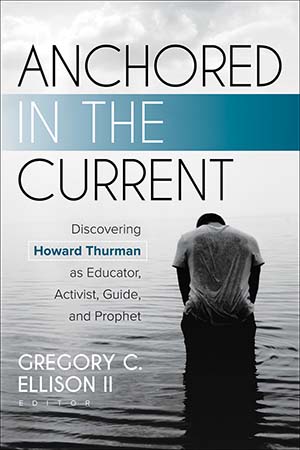Two film recommendations from Robert K. Johnston, professor of theology and culture at Fuller Theological Seminary.
FILMS
The Way I See It, directed and produced by Dawn Porter (Focus Features, 2020, 100 minutes)

THIS DOCUMENTARY OFFERS A LOOK AT two iconic presidents, Barack Obama and Ronald Reagan, as seen through the eyes of White House photographer Pete Souza. We watch Souza being “a fly on the wall,” always present but largely unnoticed, as the presidents go about their lives, whether at work or at play. It is photojournalism at its best, showing the human emotion of these men. As one reviewer writes, “expect to be moved to tears” as you relive “the memories of dignity that once piloted the country.”
Hosea, written and directed by Ryan Daniel Dobson (Hosea Productions, 2019, 90 minutes)
THIS FILM, CREATED BY A 39-YEAR-OLD actor with a theology degree from Southern Nazarene University and filmed in Oklahoma City, retells a story from the Hebrew scriptures. It explores the life of Hosea’s wife, Gomer, and asks viewers to put themselves in her shoes. Powerful and heartfelt, the film inspires discussions about love, redemption, and identity. (The film explores sexual abuse, mental illness, and self-harm and is rated R.)
BOOKS

How to Lead When You Don’t Know Where You’re Going: Leading in a Liminal Season, by Susan Beaumont (Rowman & Littlefield, 2019, $28).
CONSULTANT, COACH, AND SPIRITUAL director Susan Beaumont has worked with hundreds of congregations and denominational bodies on issues such as strategic planning, board development, performance management, and staff team design. She has taken the insights she’s gleaned throughout her career and written a book tailor-made for leaders of institutions that are facing an uncertain future — in other words, a book for practically every leader right now.
“You won’t find five easy steps or three simple solutions to anything,” she writes in the preface. “Rather, you will be invited to stand firm in a disoriented state, learn from your mistakes, and lead despite your confusion.”
Using fictionalized cases of congregations and leaders as illustrations, Beaumont addresses how leaders can best lead when their institutions are in a “liminal state” — a state of transition, ambiguity, and disorientation between “something that has ended and something else that is not yet ready to begin.” She covers topics such as how to hold steady in the midst of unknowing and how to tend to the soul of the institution. She considers the challenge of communal discernment in times of uncertainty and anxiety, the importance of shaping institutional memory and clarifying purpose, and the promise of eventual emergence from the liminal state into something new.

Anchored in the Current: Discovering Howard Thurman as Educator, Activist, Guide, and Prophet, edited by Gregory C. Ellison II (Westminster John Knox Press, 2020, $30).
FOR READERS UNFAMILIAR WITH Howard Thurman, this book provides an introduction to the 20th-century religious trailblazer. We learn about his childhood in Florida, his first pastorate in Ohio, his celebrated preaching, his meeting with Gandhi, and his cofounding of the first fully interracial religious congregation in the United States. We also learn about his academic work at Howard University and Boston University, where a new generation of leaders, including Martin Luther King Jr. and Barbara Jordan, was formed and informed by Thurman before his retirement in 1965.
For readers already familiar with Thurman’s story, this volume provides something more: reflections from a “cadre of luminaries,” brought together by Gregory C. Ellison II, associate professor of pastoral care and counseling at Candler School of Theology, to share how Thurman’s wisdom has informed their own work. Barbara Brown Taylor and Parker J. Palmer consider Thurman as vocational anchor; Walter Earl Fluker and Shively T.J. Smith see Thurman as anchor for educators; Marian Wright Edelman, Starsky D. Wilson, and Liza J. Rankow consider him as anchor for activists; and Luke A. Powery, Patrick D. Clayborn, Tyler Ho-Yin Sit, and Luther E. Smith write about him as spiritual anchor. These luminaries and others succeed in sharing stories that illustrate Thurman’s significant, enduring influence.
What are you watching? Do you have a film to recommend? Drop us a note at editors@intrust.org.